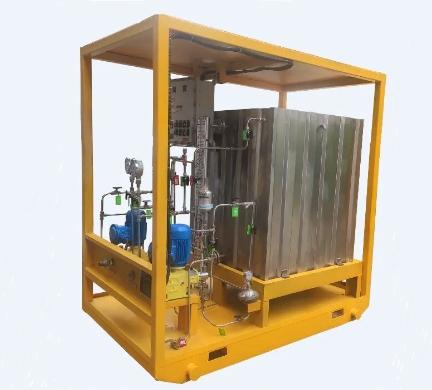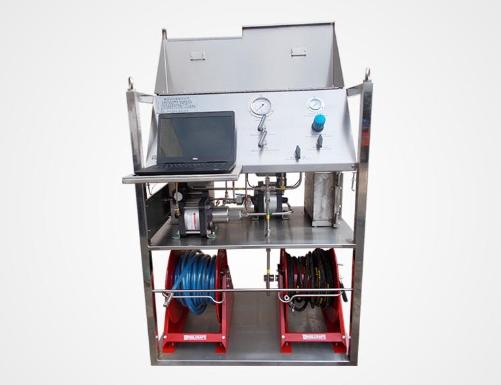Key Components for Ensuring Equipment Integrity through Burst Pressure Testing

In various industries, from oil and gas to manufacturing and aerospace, the integrity of pressure vessels, pipelines, and critical equipment is paramount. Burst pressure testing is a crucial method for evaluating the strength and safety of these components. Dual hydrostatic test pumps have emerged as a vital tool in conducting these tests with precision, efficiency, and reliability. Let's explore the key components and advantages of dual hydrostatic test pumps in ensuring equipment integrity through burst pressure testing.
The Components of Dual Hydrostatic Test Pumps
Dual hydrostatic test pumps are designed with several key components that collectively enhance their effectiveness in conducting burst pressure tests:
1. Dual Pump System: The hallmark feature of dual test pumps is the presence of two separate pump units. This design allows for greater flexibility in pressure generation and the ability to conduct tests within a broader pressure range.
2. Pressure Control System: Dual pumps are equipped with advanced pressure control systems that ensure precise and stable pressure management. This feature is critical for conducting accurate tests and evaluating equipment reliability.
3. Automation and Control Panel: Dual hydrostatic test pumps come with user-friendly control panels that provide operators with the ability to set and monitor pressure levels. They often offer automation features, such as programmable pressure profiles and remote control, which streamline testing procedures and enhance repeatability.
4. Safety Measures: Ensuring the safety of both equipment and personnel is a top priority. Dual pumps incorporate safety features, such as pressure relief valves and emergency shut-off controls, to prevent over-pressurization and accidents during testing.
5. Data Logging and Reporting: Advanced dual pumps may include data logging capabilities. This feature allows for the recording of test data, which can be crucial for documentation, analysis, and quality control purposes.

Advantages of Dual Hydrostatic Test Pumps
Utilizing dual hydrostatic test pumps for burst pressure testing offers several significant advantages:
1. Wide Pressure Range: Dual pumps can generate a broad pressure range, making them suitable for conducting tests on a variety of components, from low-pressure valves to high-pressure pipelines.
2. Precision and Consistency: The advanced pressure control system in dual pumps ensures that tests are conducted with high precision and consistency, reducing the likelihood of errors and inaccuracies.
3. Versatility: Dual hydrostatic test pumps are versatile and adaptable to various testing scenarios, including complex and high-stress applications. They can accommodate the testing needs of diverse industries.
4. Efficiency: The automation and control features enhance efficiency, reducing the time required for testing and allowing operators to focus on other critical aspects of the process.
5. Safety Assurance: Dual pumps are designed with safety in mind. They incorporate safety mechanisms to protect against potential hazards associated with high-pressure testing.
6. Quality Control: The data logging and reporting capabilities support quality control efforts by providing a documented record of each test, allowing for thorough analysis and traceability.
Conclusion
Dual hydrostatic test pumps are indispensable tools for ensuring equipment integrity through burst pressure testing. Their advanced components, precision, and versatility make them the ideal choice for a wide range of industries where the safety and reliability of pressure vessels and critical equipment are non-negotiable. By incorporating dual pumps into their testing protocols, companies can confidently assess the strength and durability of their equipment, adhering to industry standards and regulations while safeguarding their operations and personnel.
- Art
- Causes
- Crafts
- Dance
- Drinks
- Film
- Fitness
- Food
- Games
- Gardening
- Health
- Home
- Literature
- Music
- Networking
- Other
- Party
- Religion
- Shopping
- Sports
- Theater
- Wellness


